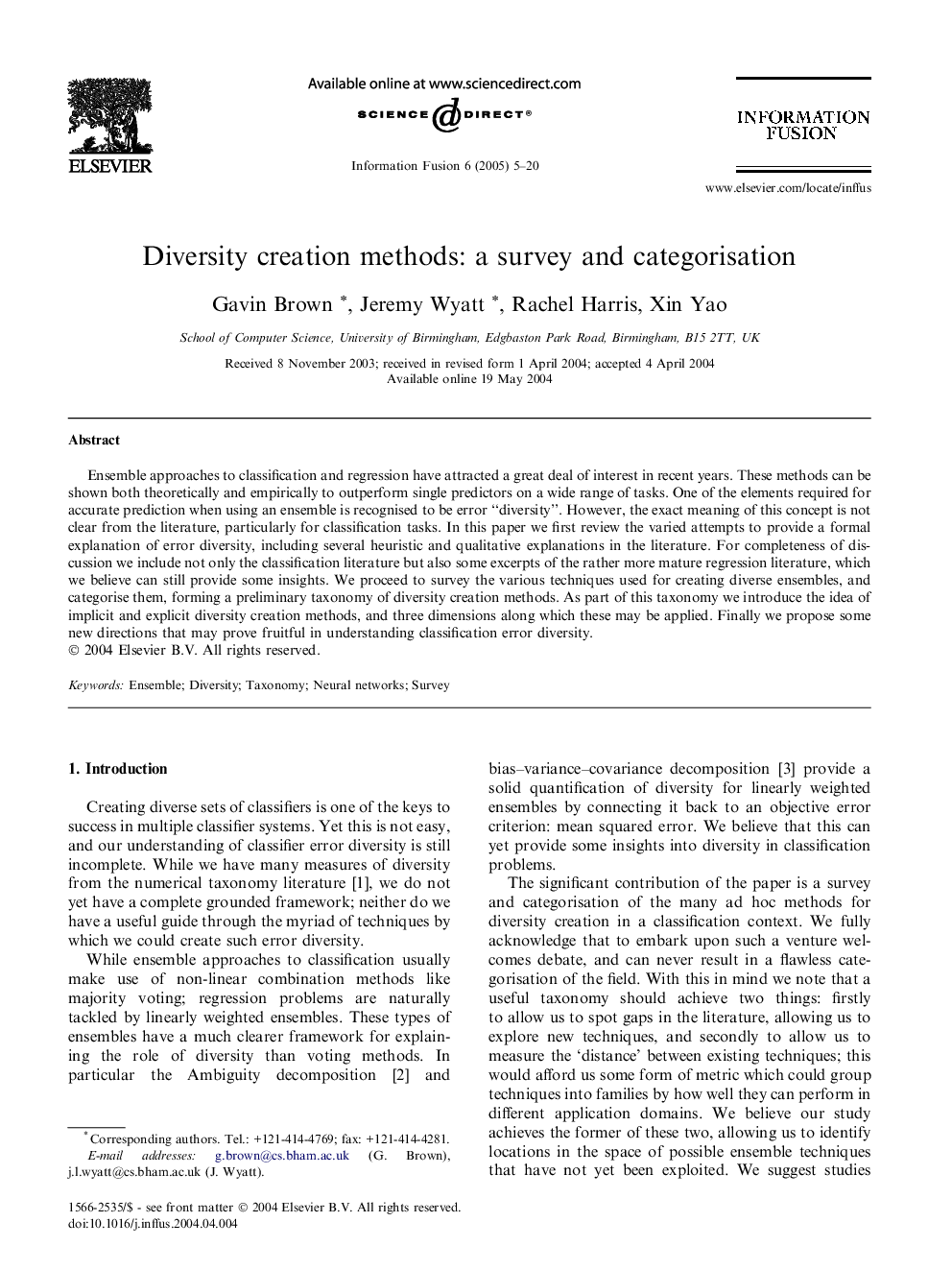| Article ID | Journal | Published Year | Pages | File Type |
|---|---|---|---|---|
| 10359966 | Information Fusion | 2005 | 16 Pages |
Abstract
Ensemble approaches to classification and regression have attracted a great deal of interest in recent years. These methods can be shown both theoretically and empirically to outperform single predictors on a wide range of tasks. One of the elements required for accurate prediction when using an ensemble is recognised to be error “diversity”. However, the exact meaning of this concept is not clear from the literature, particularly for classification tasks. In this paper we first review the varied attempts to provide a formal explanation of error diversity, including several heuristic and qualitative explanations in the literature. For completeness of discussion we include not only the classification literature but also some excerpts of the rather more mature regression literature, which we believe can still provide some insights. We proceed to survey the various techniques used for creating diverse ensembles, and categorise them, forming a preliminary taxonomy of diversity creation methods. As part of this taxonomy we introduce the idea of implicit and explicit diversity creation methods, and three dimensions along which these may be applied. Finally we propose some new directions that may prove fruitful in understanding classification error diversity.
Related Topics
Physical Sciences and Engineering
Computer Science
Computer Vision and Pattern Recognition
Authors
Gavin Brown, Jeremy Wyatt, Rachel Harris, Xin Yao,
